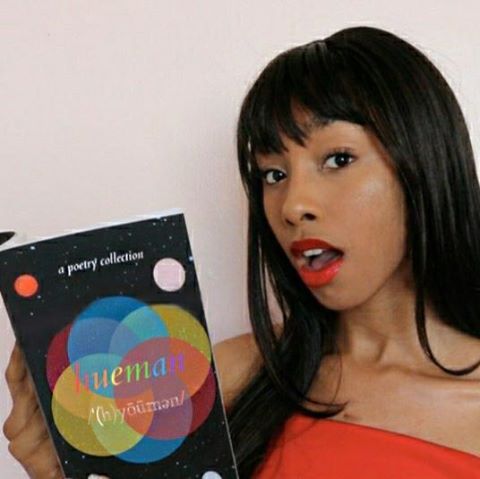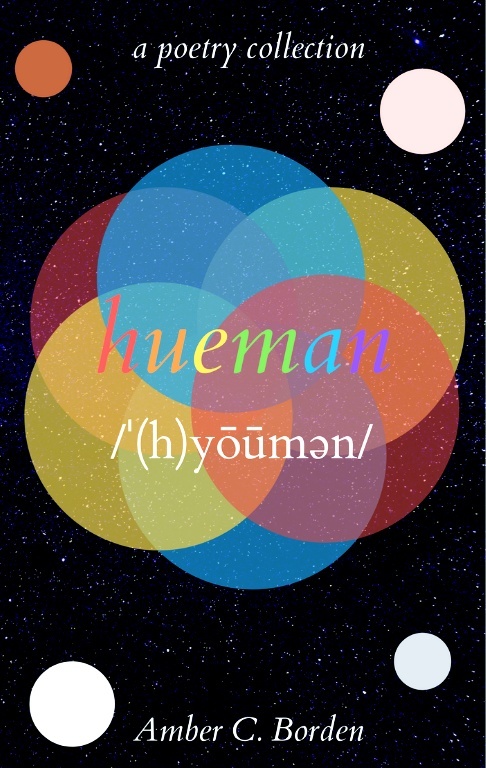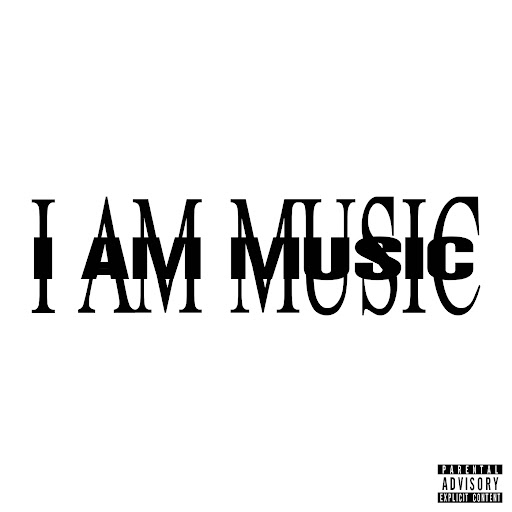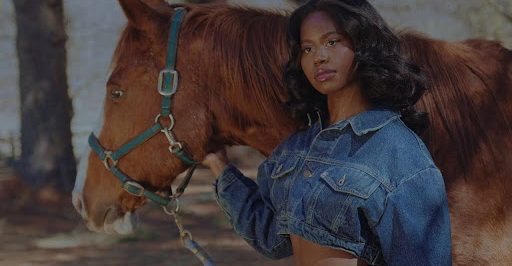
Our emotions are often associated with colors –– blue is sadness; red is anger; green is disgust or envy; yellow is happiness. Life is a trainwreck of these emotions and colors splattered on a canvas. They blend right into one another and the experiences linked to these colors shape who we are. In her debut collection of poetry, Amber C. Borden –– ‘20 alumna, writer and former Torch Social Media Manager –– analyzes this complex relationship between color and life. “Hueman,” published on April 23, is composed of over 40 poems categorized by the colors of the rainbow, including white, pink, black, grey and brown.
A Queens native, Borden draws on her personal experiences to illustrate the impact of color in our life. When she isn’t writing poetry, she works as a freelancer for New York Amsterdam News and hopes to travel in the near future. With a bright and colorful future in store, Borden plans on publishing more books and fulfilling her dream of becoming an author.
How did you feel when you got that book in your hand for the first time?
So, I don’t know, because I ordered proof copies throughout the process to see if everything was good. So every time I got a proof copy I was internally screaming and really excited like “Oh my God! This is my baby! We’re gonna make you perfect.” And then when it finally finally came I was just like “Ugh, you feel so good,” because it’s matte and I’m like “You’re so cute, and small, 5×8, like wow.” I felt like a real mom, but it’s for an object.
When did you first start writing poetry though?
Um, writing poetry? [I started writing in], like, a book journal, probably when I was 11 from what I can remember. So I was like young, keeping a journal of poetry.
So it’s been with you for a while.
Mmhmm. For years. I’ve always loved writing. I’ve always wanted to be an author. When I was growing up, I wanted to just be a writer. You know, that’s all I wanted for a career. And I’m like well, that’s hard because you need to make money and it’s really rare to have that bestselling book. You know what I mean? And so Journalism, I mean I can write. But, I’ll stop rambling.
What inspired you to write Hueman though, specifically?
Okay, so that’s pretty interesting. This is going back all the way to November 2018 and I wanted to write a poetry book because it’s just… I don’t know. You know when a random feeling of inspiration just hits you and you’re just like I want to do this so I’m going to do it? And I’m like “This is what’s going to happen.” So I was looking up “how to write a poetry book” in the movie theatre. I forgot what movie we were watching and I was just on my phone like writing down notes. “This is how you write a poetry book. It’s going to be called ‘human’,” but it was spelled differently at the time. It was just all capital ‘HUE.man.’ But then I’m like “Oh!” So the process kind of evolved into what it is now. But it started in 2018 in the movies, randomly as a bing bang type of inspiration.
What was your creative process like? How did you relate the poems to the colors too?
So I had a list of what I wanted the book to look like and I broke down each section by color as it is in the book. So, taking what I learned from color psychology and [different] colors’ impact and all that, I wanted to make sure the poems made sense and belonged to each color. It wasn’t in chronological order, so I didn’t start with white and go all the way, ending with black. I would have a good blue day and other days I would have a great purple day and I would suck at indigo. The process of matching them was really fun because it helped me cut the fat on what was really close and important to that color and poem. Does it really make sense? Like does white lies really go with white or does it go with grey? That kind of thing. Going back to the list, I just made sure that once I finished a poem I would write it down and then cross it out. If I had an idea for a title, I would just write the title where I thought it belonged. It was more of a process of elimination, just going with it, matching the puzzle pieces.
And what do you hope readers take away from reading Hueman?
So the goal of Hueman was to reach everyone on a universal level because it is about all of us essentially. Even though it is coming from my perspective, I wanted us to understand and touch base on what it means to be human. A lot of the poems inside deal with certain emotions and experiences that we all kind of experience in a sense. I tried –– well I did include all of the seven deadly sins. We all experience lust, greed, laziness and things like that, so we can all relate to those types of things. I really, really tried my best to make it as universal as possible while still staying true to my writing, myself and my emotions.
Did you draw from your personal experiences for these poems?
For sure. It was definitely like a puzzle piece of my own emotions and experiences as well as observations and other narratives. There are some things in life that I have never experienced, like getting married for example. I was never married! So I don’t know what that’s like. I would ask my parents and I would ask other married people like “why did you get married?” and “how does it feel being married?” and things like that. There’s one poem called “The Blueprint” that’s all about being a man. And clearly I’m not a man so I asked all the men in my life that I’m close to, “what does being a man mean to you?” and their insight helped me write certain poems.
What does ”hueman” mean to you? Like what does it mean to be “hueman”?
Oh my goodness. So “hueman” to me, it definitely just screams color, but color in the form of impact if that makes sense. Because color makes us feel and colors make us understand our world and as human beings we see and try to understand each other on a daily basis. We may not agree with each other all the time. So if you look at the spectrum or the rainbow, the colors are different but they just kinda bleed into each other, like one goes into the next. I feel like that is us as human beings and our experience. We may not have the same exact life but we do bleed and we do feel and those things do blend into each other in the beautiful and chaotic, but also amazing core that is humanity.
You published this book in the middle of the pandemic though right? It was in April. How hard was it to get everything together and publish in the middle of all of this?
Listen to me. Oh my God. So I had the deadline of April 23 because that was World Book Day so I wanted the book to release on a holiday, to have a more significant meaning. My favorite number is 23 so I was just like, “Let’s make it all significant.” I’m trying to do class assignments and do my internship and do Torch stuff all while editing and making sure the format is good. So I’m screaming inside, but I tried to make it work. Like I told you earlier, I would order proof copies so I could physically see what I needed to edit, so during that time I made sure everything was perfect. But while that time was boiling down to the 23, the heart attacks were real. But it happened. It’s done, it’s out. Be happy.
Did you dedicate this poetry collection to anyone particular in your life?
So in the book, I dedicated it to my blood, my water and my light, so it’s basically everyone. It’s dedicated to everyone in my life who is important and that is like my blood which is my family; my water which are my friends; and my light are the people who inspire me and my acquaintances and who I interact with on a professional level. So everyone. ‘Cause I wouldn’t be who I am without them and a lot of the things I said, I wouldn’t know certain experiences if it wasn’t for their insight. It goes out to all y’all.
Is there any particular author or poet who inspired you throughout this process, who you looked up to?
Well, “look up to” is Maya Angelou because she is a queen; she’s just an icon. Ugh, me when I’m older, please, I’d love to be her. I did my research while writing my book because you know how you have your own poetry style, I wanted to be better as a writer and I wanted to expand my horizons on what’s out there. I loved reading of course, Maya, but I also read “Prelude to Bruise.” So good. I think his name was Saeed [Jones] … But “Prelude to Bruise,” beautiful. “I Am Her Tribe” by Danielle Doby … There was another one, “There Are More Beautiful Things Than Beyoncé” by Morgan Parker. Really good. Those books in particular just really enhanced my view of what it means to be a poet because they all came from different perspectives. One was a male, one was a black female –– an older black female –– one is a middle aged black female and one was a white woman, so I’m getting different voices to learn from. And that helped throughout this process. To really know what my voice is. I also did research on color too because that was really important for the book as well. So I was borrowing huge tons of color books whether it be your chakras, your aura colors, like color psychology and art books. Because I really wanted to know the meanings of these colors; like how they impact our minds and how our lives work with colors.
We all always have these ideas sitting on the bus but sometimes it’s so hard to actually start and get that first word down on paper. So what was it like for you? You had this idea. How did you put it forth and make this book?
So it’s kinda like what you just said. You are on the train and then you have these ideas or you’re on the bus and you’re like just “Oh my God this is great.” I would usually get hit with these lines, like “Wow that sounds really pretty.” So at first I would make huge lists of all these poetic lines, and then when I had free time I would take from those lines and then start developing the poems. Or if I was really just feeling it, or feeling the mood, I would just push that poem out. Let me tell you, House music and Lana del Rey just pushed them out. If I wanted to be moody, Lana del Rey came in heavy. To really sit down and have the time for it, I really just dived in deep in the winter break 2019. Winter break 2019 was when I really had the time to sit down because life is crazy. Oh, one more thing. One of the poems was from a poem I wrote when I was 13, so I gave some of my younger works the respect they would have wanted. So I just took that and edited it, of course, but I still kept the majority of the content the same from those poems. So it came from past works, but also new works as well.
Is there any one particular poem that really sits close to your heart?
My favorite is “Lavender Oil.” It’s just so cute to me. I adore that poem because one, it’s adorable; two, I love lavender oil; three, it just feels so dreamy and I like feeling dreamy and ethereal, like a princess. You know what I mean? I’m really proud of how I used the writing techniques. It’s just like “yes!” If you’re a poet and you’re a writer and you get it, I’m proud. I’m proud of that.

And you designed the cover yourself right?
Yes, I did!
What was that like? Have you done something like that before, or was this your first project taking on a cover design?
This was definitely the first project taking on a cover design. I have never designed a cover. I used Canva actually. So shout out to Canva. I remember it was just one night and I was just on the software just creating different types of HUEMAN covers and I was just like “yeah, this is not it.” And then there was one day during the semester, I was in the library in St. Augustine and I did it. It’s not actually the current cover; I thought this was the cover actually. I’m like “This is it! This is so simplistic and perfect. This is my cover. Oh my God!” And then months later, I was like “let me just try something with these circles.” I kept making circles with primary colors and then “ta-da.” I’m like “forget the old cover. She’s the one.”
Were there any particular challenges that you came across writing this book over the two years?
As a challenge? I would say editing in terms of both grammar, because you are trying to follow a poetic form but also make sure it still makes sense with the stanzas and all that, and then also the structuring of the actual book. So like the books matter if that makes sense. I had to make sure that everything is in the margins and that certain designs fit within that space. So I was kind of mad that math was involved, but I had to pull it together to make sure it worked. Those are the main two: formatting structurally and then formatting grammatically correct.
Do you plan on publishing another book in the future? Anything in store for us?
Abso-freakin-lutely! I bought 10 ISBNs, so I have nine books to go. I can do what I want with those.
Do you have any advice for people, maybe aspiring writers or poets, or anyone who wants to get that first word done on paper and start?
I would say once you feel it, just let it free. Once you feel it in you, just let it out, especially if it’s one line, because that one line can turn into an epic poem. Allow yourself to be creatively free; don’t have any restraints on yourself because it may not be perfect once it’s done on paper, but you can take something beautiful out of that imperfection. You know what I mean? Just have fun with it because there was one poem that I thought was horrendous. But from that one poem I was able to make three ones, so you really have to be open with your work. So that’s a piece of advice too: be open with your work and allow it to speak for itself because it might tell you something you didn’t even realize.
Check out Amber’s poetry collection on Amazon here or follow her instagram @hueman.thebook . Be on the lookout for more publications by our very own author!










Echad • Jan 26, 2021 at 10:47 pm
Great book. Amber is so talented, creative and beautiful inside and out. Get the book and you’ll see.